Last week I managed to get out in the garden and complete a rather difficult task. My bay laurel tree had slowly grown to a prodigious size since I planted it 8-10 years ago. The glossy branches were healthy and wonderful but they were crowding their neighbors and threatening to dominate the front yard. It was time to trim it to a more reasonable girth.
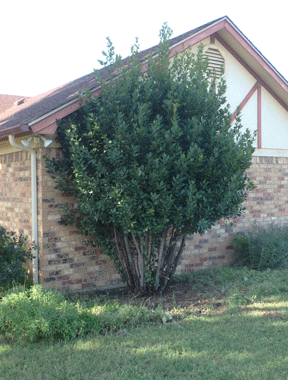 To do this I had to get down on the ground with my tools – a garden saw and various sizes of pruning tools. Bay laurels grow very densely and quickly send up secondary trunks from the root base. My first task was to hack my way deeply enough into this impenetrable mass to reach the main trunks. Then slowly I had to cut off excess branches and trunks and work my way around the base. It was a messy, sweaty job that had to be done in two attempts – the weather being as hot as it is now in Fort Worth. But eventually I achieved my victory over the bay laurel. The end result is what you can see here.
To do this I had to get down on the ground with my tools – a garden saw and various sizes of pruning tools. Bay laurels grow very densely and quickly send up secondary trunks from the root base. My first task was to hack my way deeply enough into this impenetrable mass to reach the main trunks. Then slowly I had to cut off excess branches and trunks and work my way around the base. It was a messy, sweaty job that had to be done in two attempts – the weather being as hot as it is now in Fort Worth. But eventually I achieved my victory over the bay laurel. The end result is what you can see here.
Growing Bay Laurel in the Herb Garden
Very few trees are considered a proper part of an herb garden. Most herbs are annuals and small shrubby perennials. But the bay laurel (Laurus nobilis) is the one tree that stands tall in any herb garden. It is native to India, North Africa, and the Mediterranean. This multi-trunked tree grows to 40 feet in its native region, although in the US you’re not likely to see one growing that large. It sports glossy 3-4 inch deep green leaves that grow densely along the smooth barked branches.
Bay laurel will grow reliably only as far north as Zone 8. When temperatures dip below 32 degrees for any length of time the leaves will turn a pale brown and drop off. If freezing weather is predicted, a cloth covering and mulch at the base can make all the difference between life and death. If you live in colder regions, plant bay laurel in a large pot so you can bring it indoors for winter protection. Bay laurel tends to grow more slowly in a pot. I had this bay laurel shown in the photo above in a container for about three years with very little growth each year. Then I decided to take a chance and plant it in my garden beds. It more than doubled in volume the first year in the ground and is now the sturdy tree you see here.
Using Bay Laurel in the Kitchen
In the kitchen bay leaves are used for flavoring meat. Bay leaves are tough, unlike most herb leaves, and take longer to release their flavor into foods. The staff at America’s Test Kitchen recently investigated the best way to use by leaves in food. They found that after short periods of cooking (30 minutes or less) the leaves provided almost no flavor. But when cooked with foods for an hour or more, bay leaves finally released their unique flavor into foods.
Another way bay laurel leaves differ from other herbs is their ability to retain their shape after long hours of cooking. I am occasionally asked about why it is necessary to remove bay leaves from food before it is served. The main reason for this is that the leave continues to be tough and any dinner guest will not enjoy a mouthful of bay leaf. It is also possible that the tough leaves can be accidentally swallowed and stick in the throat, not a good thing to happen at your dinner party.
Bottom line – cook bay leaves for long periods to release the flavor and then remove them from foods before serving. So whether in the garden or in the kitchen, victory is achieved by perseverance.

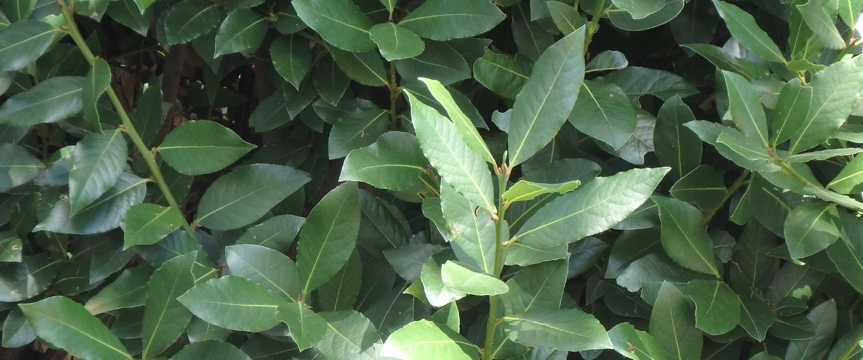

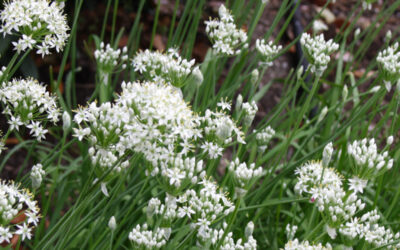
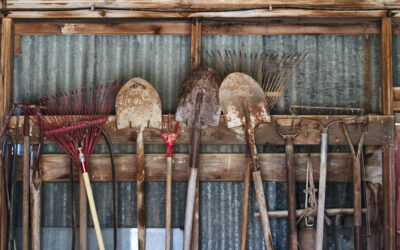






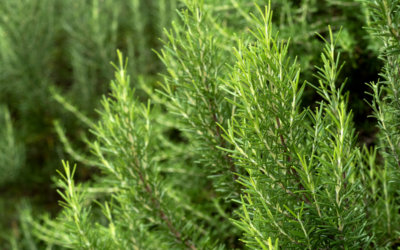


Thank you for this article on the Bay Laurel. I have always bought bay leaves in a bottle and now have a small bush of my own. I cook red beans for my Louisiana side of the family and have to have bay leaves for flavor. Because the leaves are always dried in the bottle I’m confused about using the fresh leaves. Will you please give me some hints?
Thanks,
Donna Bell
Donna, for most herbs the general rule of substitution is one teaspoon of dried herbs for three teaspoons (one tablespoon) of fresh. This is largely because herb leaves shrink considerably when they are dried. With bay leaves, however, it’s just a one-to-one substitution – the same amount whether fresh or dried.
One other thing to remember is that very old bay leaves (ones that have been on the tree from the previous year) will not be as flavorful as the new growth of this year. Generally, I clip 4-6 inches from a branch and use those leaves.